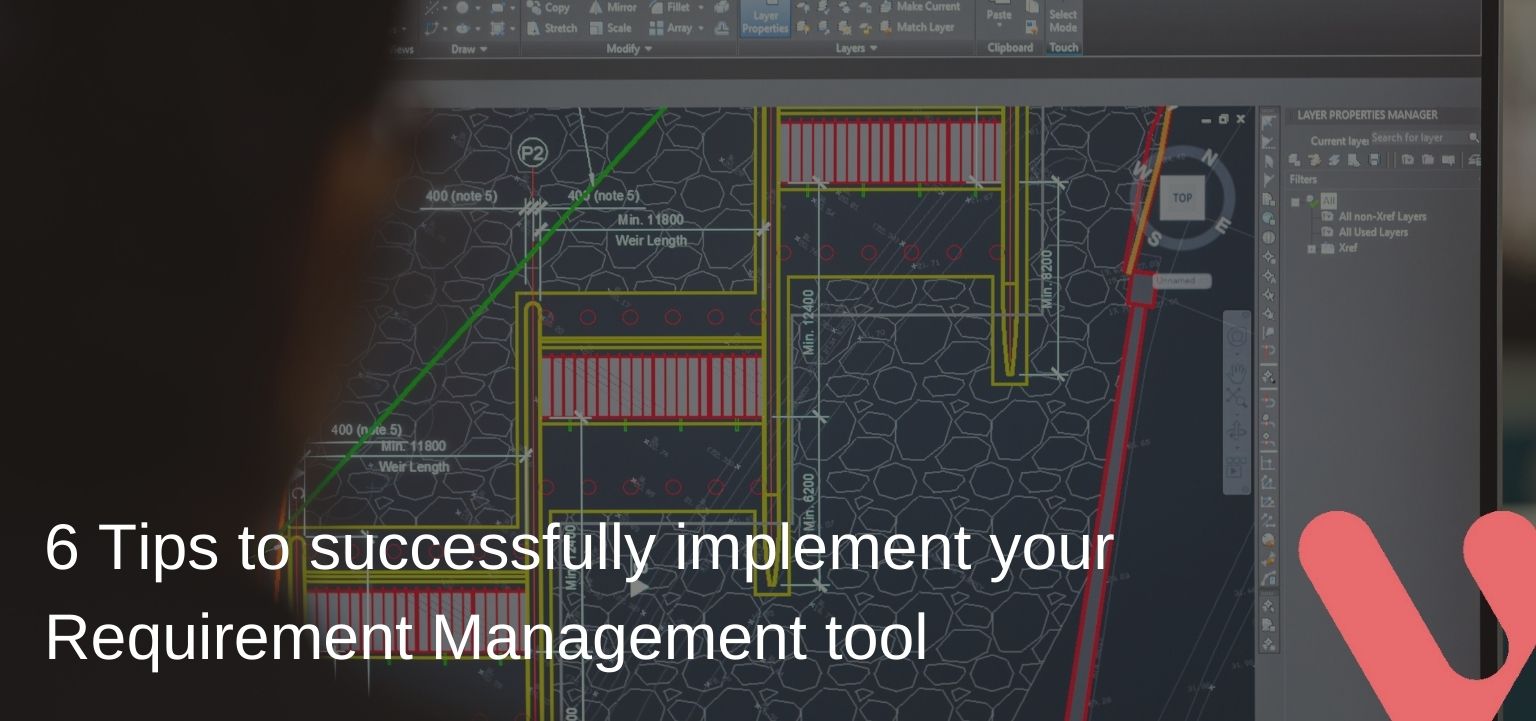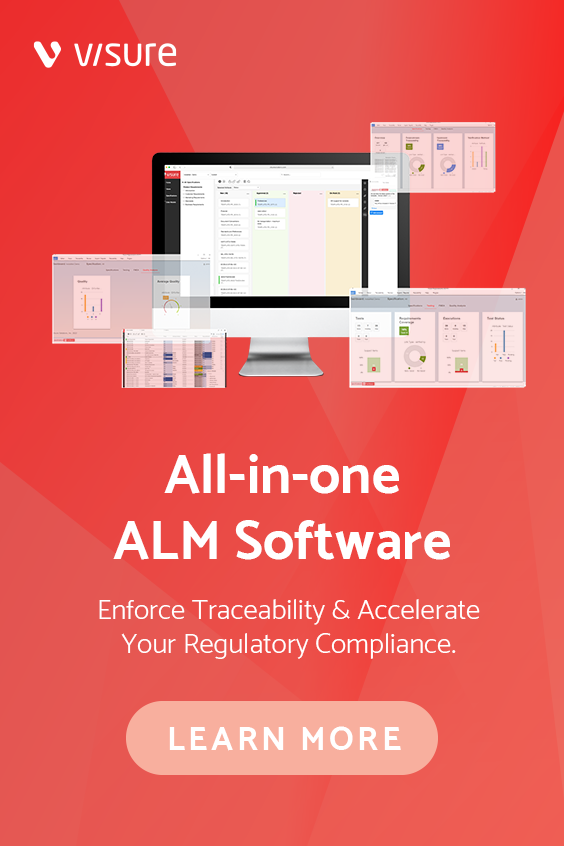6 Tips to successfully implement your Requirement Management tool
Why do you need a Requirements Management tool:
It’s no secret that poor requirements lead to poor quality products and that these projects are often filled with scope creep. The challenges with a document based approach to requirements are many, including the fact that it is difficult to keep them up to date in the ever changing of software development. Even if you have done a stellar job in gathering and documenting user requirements, the task of managing the requirements has just begun.
Here are some primary reasons for using an automated Requirements Management tool according to Karl Wiegers (www.processimpact.com article on Automating Requirements Management).
- Manage versions and changes. Most systems are released in an iterative (or Agile) fashion today. This means that requirements will have versions associated with the release. Being able to track changes and identify the impact of changes is controlling change and scope creep.
- Store additional information about the requirement in requirements attributes. There is so much more we need to know about a requirement other than the requirement’s statement. For example: status of the requirements, priority, who requested it, test status. These are just a few suggestions.
- Link requirements to other system elements. In order to ensure all requirements are part of the product, all requirements are tested, changes are evaluated, etc. we need to be able to link requirements to other system elements.
- Track status. Think of being able to create a list of all requirements that are not approved, all requirements that are not linked to lower level requirements, and all requirements that are not tested. These are the kinds of information that helps us really know the status of the project.
- View requirements subsets. Think of being able to view all high priority requirements that do not have a test method assigned. Or a security office who wants to review only the security related requirements. Being able to filter requirements to only include information the user is interested in seeing reduces the time required to review these requirements.
- Control access. You will want to make sure that business analysts can only modify user requirements; system analysts can only modify system requirements, and so on. Once approved, access to requirements must be limited so no further changes can be made without a review.
- Communicate with stakeholders. Notification of changes is essential to making sure stakeholders are aware of all potential changes. Most requirements management tools can assist in automatically providing this kind of notification.
For those of us who have used requirements management tools, it is difficult to imagine going back to doing that work on paper. And I believe there are few of us that would choose to go back to that method. I personally would take any requirements management tool over a document-based approach. However it is amazing to me that many organizations of all sizes continue to rely on document-based tools to manage their requirements. Using a Requirements Management tool is a required first step to getting control of requirements.
Before buying a Requirements Management tool:
It’s no secret that professional requirements engineering solutions help improving efficiency when working with requirements. They also help minimizing the number of mistakes which would typically lead to costly corrections when found in later phases of the development lifecycle.
Therefore many companies are looking for such requirements engineering solutions, but unfortunately, the same rule that for almost any other type of software tools also applies to requirements engineering solutions: a fool with a tool remains a fool…
The best-in-class requirements engineering solutions like Visure Requirement ALM platform are very flexible at being able to support almost any kind of requirements engineering process. Of course, we – as a tool vendor – are happy to sell you some software but we are convinced that this alone won’t help you. Instead we want to help you be successful in using our products.
So, before purchasing a requirements engineering solution please make sure that you have a proper requirements engineering process defined with certain activities assigned to certain roles. Of course, we can also share our experiences with you in this area. If you know the detailed characteristics of your process it’s much easier for you to find an appropriate solution which fits the needs of your process.
6 tips to successfully implement a Requirements Management tool on a complex system
Many years ago I spent several years working on a very complex weapon control system. As you can imagine the requirements were large, complex, and changed often. We spent a lot of time just trying to manage those pesky changes that continued to be submitted, both from customers and from the developers. In those early days, we did not have any requirements management tools to help use assess these changes. We were using Interleaf and Excel (I can hear groans of pain now). Everything was manual, including our complex traceability. We had a couple of folks who did nothing but maintain the traceability matrices and assess the impact of changes. At this time we only had traceability from the Concept of Operations to System Requirements to Subsystem Requirements. I say “only” but at that time just having this level of traceability was a big accomplishment.
When we had enough changes we issued a new system requirements document and new subsystem requirements document. Those poor contractors had to go through the massive subsystem requirements and manually determine what had changes. I can’t imagine the time the contractors spent just trying to figure out what changes they needed to be concerned about.
It was in the middle of this upgrade project that the customer said enough and tasked my team with evaluating and selecting a requirements management tool. The tool we selected is not important to this particular discussion, but what we learned from this tool selection and implementation is important. Here are some lessons learned.
(1) – There is not a single tool which is going to please everyone. We had users who loved our selection and those who fought us every step of the way. Without a customer supporting and enforcing the change it would not be possible on a large program like this one. One user complained about the column size of the tool generated traceability matrix, totally ignoring the fact that it saved him days of manual effort.
(2) – Our manual traceability was not very clean. Once we imported all of our information into the tool and linked it up we found many gaps in the traceability.What was more disturbing was that we had links that really didn’t make any sense.We had to do a lot of work to clean up our traceability matrices.
(3) – Just tracing requirements was great, but now we could use the same effort to link requirements to test plans, and went so far as to link subsystem requirements to design documents that we could review. This didn’t happen overnight, but it did happen. Eventually we could trace system requirements to a subsystem requirement to a design document to a code module. We even used a tool to determine the complexity of code modules and used this to help determine how difficult a change would be to implement and test.
(4) – Metrics from a requirements tool are key to understanding completeness of testing activities. We often thought we were 50% complete with testing. After all, 50% of the tests were completed. However, what we found was that we were prone to testing the simplest and most understood parts of the system first. So even thought we were 50% complete, everything left was very high risk. We learned to prioritize our testing by looking at requirements priorities and software complexity, information we could not determine through manual traceability.
(5) – It was very easy to get overwhelmed. Start simple. We had to back off our ambitious ideas and begin with a simple traceability model. As we learned and gained more experience with the tool, we added more information to our model. We were constantly assessing our process to figure out what else we could do to make it better.
(6) – Don’t skimp on training and mentoring. We trained everyone on the project and created experts who helped users get over initial hurdles. We sent our experts to our contractors for weeks at a time to help them get up to speed in using the tool. We even had our own internal users group. Be prepared for this kind of effort.
What a great leargning experience this was for me. If you´re interested in embarking on a change like this to improve your requirements process, contact Visure Solutions. We will be happy to discuss your process with you.





